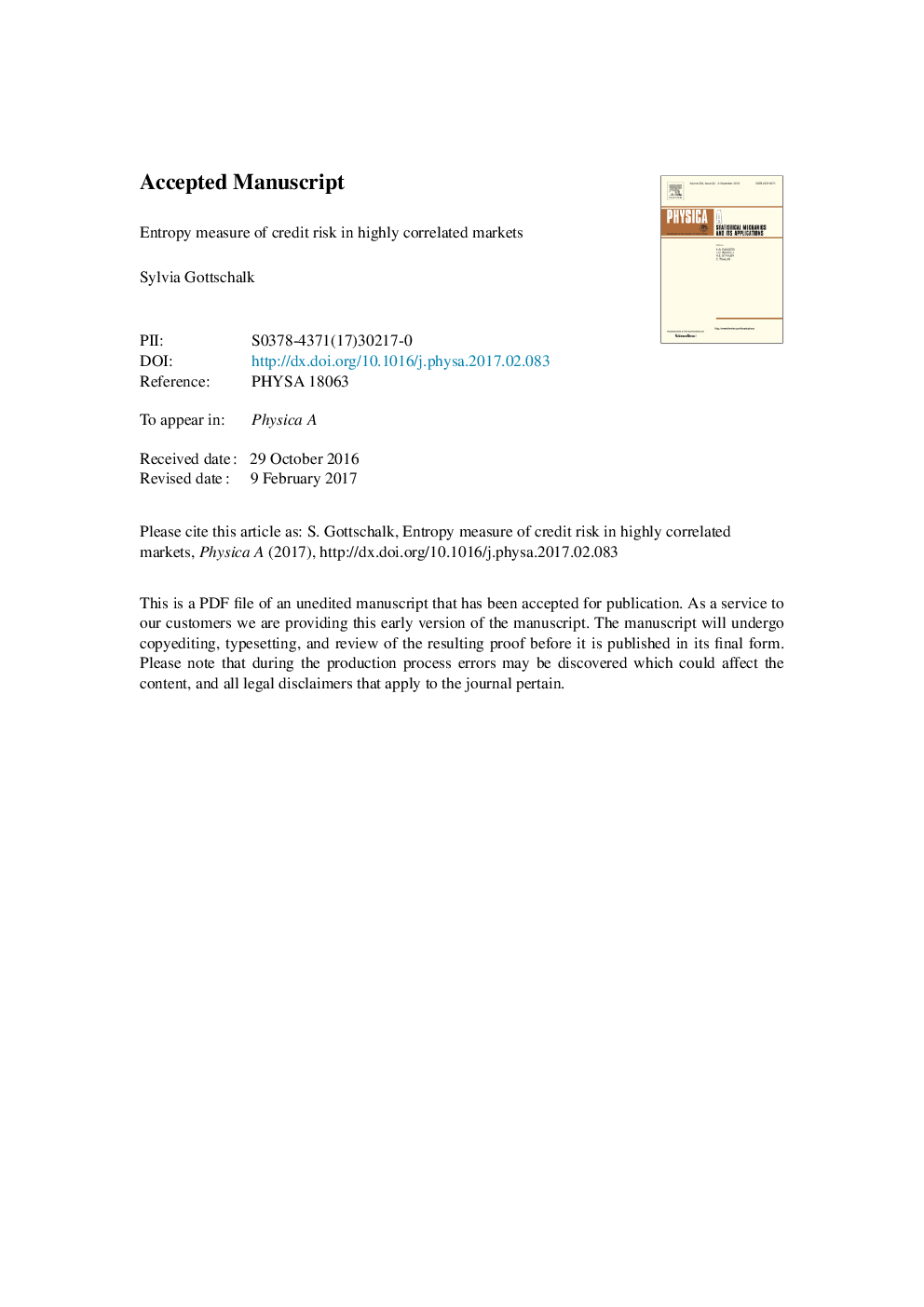| Article ID | Journal | Published Year | Pages | File Type |
|---|---|---|---|---|
| 5103043 | Physica A: Statistical Mechanics and its Applications | 2017 | 20 Pages |
Abstract
We compare the single and multi-factor structural models of corporate default by calculating the Jeffreys-Kullback-Leibler divergence between their predicted default probabilities when asset correlations are either high or low. Single-factor structural models assume that the stochastic process driving the value of a firm is independent of that of other companies. A multi-factor structural model, on the contrary, is built on the assumption that a single firm's value follows a stochastic process correlated with that of other companies. Our main results show that the divergence between the two models increases in highly correlated, volatile, and large markets, but that it is closer to zero in small markets, when asset correlations are low and firms are highly leveraged. These findings suggest that during periods of financial instability, when asset volatility and correlations increase, one of the models misreports actual default risk.
Related Topics
Physical Sciences and Engineering
Mathematics
Mathematical Physics
Authors
Sylvia Gottschalk,
